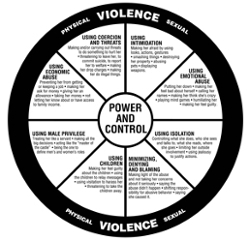AP 5910 Title IX and Title 5 Sexual Misconduct
Coast Community College District Administrative Procedure 5910 Title IX and Title 5 Sexual Misconduct – Interim Administrative Procedure covers sexual and interpersonal violence and harassment in accordance with federal and state law. Because federal Title IX regulations and California law intersect in specific ways, the District uses a two-part policy:
- Title IX (Section A): Applies to incidents that meet federal Title IX definitions and requirements.
- Title 5 / California Law (Section B): Applies to incidents that may not fall under Title IX but are still covered under California law, the federal Clery Act, or District policies.
Access full definitions in CCCD's policies
The definitions below are provided as a general overview and do not replace or replicate the full policy language.
Individuals with questions about how the policy applies may contact the Title IX Coordinator.
Sexual Harassment
Title IX (Section A)
Under federal Title IX regulations, prohibited conduct includes:
- Quid Pro Quo Sexual Harassment: When an employee conditions educational or workplace benefits, services, or opportunities on participation in unwelcome sexual conduct.
- Hostile Environment Sexual Harassment: Unwelcome sexual conduct that is so severe, pervasive, and objectively offensive that it effectively denies a person equal access to the District’s educational programs or activities.
Title 5 / California Law (Section B)
Under Title 5 and California law, prohibited conduct includes a broader scope of sexual harassment, such as:
- Unwelcome sexual advances, requests for favors, or verbal/physical conduct of a sexual nature in the educational or workplace setting.
- Situations where acceptance or rejection of such conduct is tied to employment or academic conditions or decisions.
- Behavior that negatively impacts work or academic performance or creates a hostile, intimidating, or offensive environment.
- Conduct that influences access to benefits, services, programs, honors, or activities available through the institution.
Sexual Assault
Any sexual act directed against another person without their consent is considered sexual assault. Affirmative consent means an expressed, affirmative, conscious, and voluntary agreement to engage in sexual activity.
Under federal Title IX (Section A), sexual assault is defined in alignment with the FBI’s crime reporting categories (rape, fondling, incest, and statutory rape) and applies only when the incident meets federal jurisdictional requirements (such as occurring within a District program or activity in the U.S.).
Under Title 5 / California Law (Section B), the same categories of sexual assault apply, but the protections are broader and may cover incidents that fall outside the scope of Title IX (for example, off-campus incidents or those not meeting federal thresholds).
Domestic and Dating Violence
Dating and domestic violence involve acts of violence committed within romantic, intimate, or family-like relationships.
- Dating Violence: Violence committed by someone who is or has been in a romantic or intimate relationship with the victim. Factors considered include the length, type, and frequency of the relationship.
- Domestic Violence: Crimes of violence committed by a current or former spouse or intimate partner, someone with whom the victim shares a child, or someone who has cohabitated with the victim. It also includes individuals protected under family or domestic violence laws.
Under Title IX (Section A), these definitions apply only when the violence meets federal requirements within the context of the District’s programs or activities in the United States.
Under Title 5 / California law (Section B), the same definitions apply, but protections are broader and may extend to incidents outside Title IX’s federal jurisdiction.
The definitions provided here are a general overview and do not replace or replicate the full policy language.
Emotional or psychological abuse alone does constitute violence for the purpose of these definitions.

The National Domestic Violence Hotline produced the Power and Control Wheel and the relationship spectrum to help you see where your relationship falls on a spectrum from healthy to abusive. More information about signs of a healthy and unhealthy behaviors in a relationship can be found at loveisrespect and onelove.
Stalking
Stalking is a pattern of behavior directed at a specific person, on the basis of sex, that would cause a reasonable person to fear for their safety or the safety of others, or to experience substantial emotional distress.
- Title IX (Section A): Applies only when stalking meets the federal jurisdictional requirements (e.g., occurs within a District program or activity and in the United States).
- Title 5 / California Law (Section B): Uses the same general definition but applies more broadly, even when the conduct falls outside Title IX’s federal scope.
Sexual Violence
Title 5 / California law defines sexual violence as physical sexual acts carried out against a person without their affirmative consent. This includes:
- Rape: Non-consensual penetration, however slight.
- Sexual Battery: Intentional unwanted touching of intimate body parts.
- Sexual Exploitation: Taking sexual advantage of another person without consent. Examples include prostituting or trafficking another person, recording or sharing intimate images without consent, or voyeurism in situations where privacy is expected.
Retaliation
Retaliation occurs when someone experiences threats, intimidation, harassment, discrimination, or other adverse treatment because they disclosed, reported, or participated (or chose not to participate) in an investigation or resolution process related to prohibited conduct.
- Title IX (Section A): Prohibits retaliation connected to Title IX matters within the scope of federal regulations and District programs/activities in the U.S.
- Title 5 / California Law (Section B): Provides similar protections but applies more broadly, extending beyond Title IX’s federal limits.
Retaliation can occur even if there is ultimately a finding of “not responsible.” Minor annoyances or perceived slights, however, do not rise to the level of retaliation. Good faith actions lawfully taken in response to reports are not considered retaliation.
